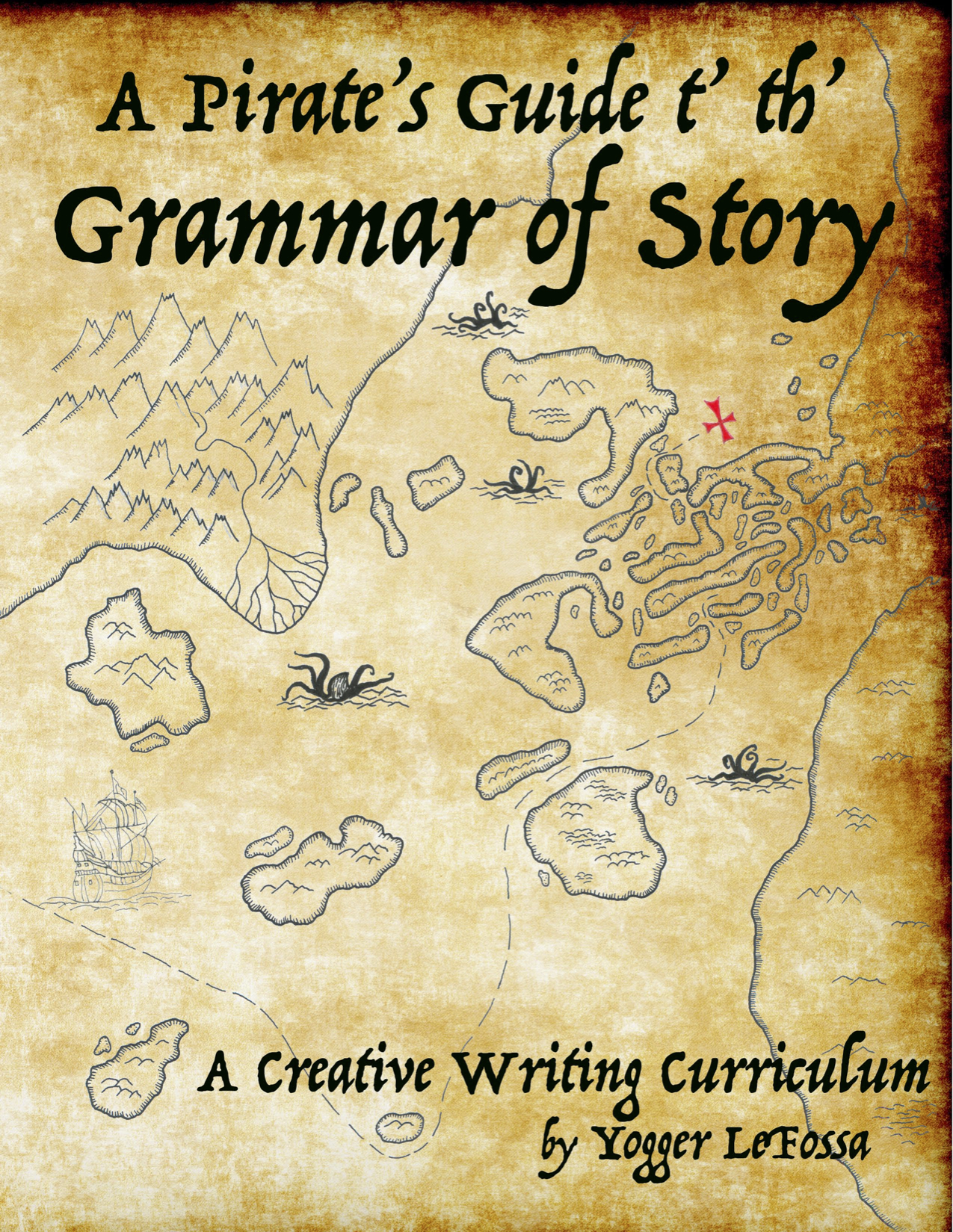How to :: A Guide to using the Guide :: Where's the Teacher's Guide?
As your student begins the workbook, you’ll notice right away that there is NO teacher’s guide. None is needed, as all the teaching is done by First Mate Manfred within each exercise. There is a short teaching portion (sometimes just a few sentences and a definition), and then the learning really takes places as your student follows the examples and works through the incremental steps of the exercises. Seriously, when Chris sat down to teach this complex thing called storytelling, he broke it down into the smallest possible steps, so there would be no gap in learning, no moment when a student would just throw up their hands to say “how did they get to that?”
That said, some sections are harder than others. Some concepts (like Values, or Light and Dark) are just more complex than others (like Setting or Plot). And some parents want a teacher’s guide. So, here you are! Click on Specific Elements to get a series of posts which go through, exercise by exercise, a bit more on each element. As much as possible, in each post you’ll find ::
An explanation of the element in greater detail and examples both in real life and in the story world.
“In Real Life” :: I’ll offer suggestions for how to challenge your student to dig deeper into the element (in life and in story).
“Finding it in the Story” :: when possible, I’ll give specific examples for your student to find within the story chapters.
There are two things I’d like to highlight. First, if you and your student want to dig deeper, every one of these concepts can be found “In Real Life.” Finding examples of it in the “story” of our daily lives, in the story that Grandpa tells, in the story that we watch in a movie is the best way to really understand and own these concepts. When that happens, you and your student will begin to realize that story is everywhere, and story is important in many places that are not traditionally “story” settings. For example, my daughter was in a Mock Trial recently. The team that won? Well, according to the judge (and I quote him): “Story vs argument is a no brainer - the story will win. So when you are thinking through your opening statement and your closing argument, you’ve got to be thinking about what story you want to tell.” But to tell a compelling story requires understanding what makes a story compelling - the elements. These very same story elements are also part of our own daily lives - we operate very much like characters in our own story, and understanding what makes a story character tick is often a clue to what makes us tick as well.
Second, once your student has read through the story and the teaching, and done the exercises, they will be able to define and identify story elements. Putting them directly into a story is the next step. To get there, have your student go through the Pirate’s Guide story itself (I would suggest after each exercise or two, and again perhaps at the very end), and identify the elements they’ve been learning. To help guide you as they find these (on their own), I created “Finding it in the Story,” a master list of each element and a few of the places (though by no means all. If your child really wants a challenge, have them write up what they find that I “miss” and send them to me - I’ll add them to the page!) where they can find those elements in the chapters preceding it. I’ve added a few from other parts of the story, as well, in the hopes that they will start to be on the lookout for these things! Of course they will have already read it, but in reading it again, with this new understanding of setting, or mystery, or hero, they will be able to see it in context and that will help bridge the gap between definition/identification, and putting it into practice. I’ll post these “Finding it in the Story” helps at the end of each element, and here in a master list.
As always, if these resources don’t answer your question, don’t hesitate to write and ask! We love to hear from parents and students, and could talk about story all day.
